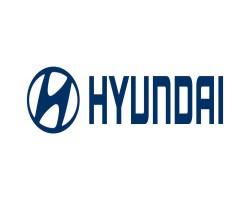What Is DSCR Ratio? A Guide to Understanding Debt Service Coverage Ratio's Importance
Unlock the key to financial health with our in-depth exploration of the Debt Service Coverage Ratio (DSCR). This vital metric assesses a company's ability to meet its debt obligations through operating income, guiding lenders and investors alike. Learn how to calculate DSCR, interpret its significance, and understand its impact on creditworthiness. Whether you're seasoned or just starting, mastering DSCR is crucial for informed investment and lending decisions.

Understanding financial metrics is crucial for anyone navigating the world of investments and loans. One key indicator that often surfaces in this context is the Debt Service Coverage Ratio (DSCR). This ratio provides insight into a company's ability to cover its debt obligations with its operating income, making it a vital tool for lenders and investors alike.
A healthy DSCR not only reflects financial stability but also indicates the potential for growth and profitability. By analyzing this ratio, stakeholders can assess risk levels and make informed decisions. Whether you're a seasoned investor or just starting, grasping the significance of the DSCR can empower you to evaluate financial health more effectively.
Overview Of DSCR Ratio
The Debt Service Coverage Ratio (DSCR) quantifies a company's capacity to service its debt. It calculates the relationship between operating income and total debt obligations. Investors and lenders utilize this ratio to assess financial health and risk.
The formula for calculating DSCR is:
[
\text{DSCR} = \frac{\text{Net Operating Income}}{\text{Total Debt Service}}
]
- Net Operating Income (NOI): Represents the earnings generated from operations, excluding taxes and interest.
- Total Debt Service: Comprises all principal and interest payments due on debt within a specific period.
A DSCR greater than 1 indicates income covers debt payments. For example, a DSCR of 1.5 implies the company generates 1.5 times its debt obligations. A strong DSCR, typically above 1.2, signals lower risk for lenders. Conversely, a DSCR below 1 raises red flags about potential default.
Analyzing DSCR informs stakeholders about a company's profitability and financial health. Investors rely on this metric to make informed decisions about financing and investment while lenders use it to determine creditworthiness.
Importance Of DSCR Ratio
Understanding the Debt Service Coverage Ratio (DSCR) is crucial for assessing financial stability and creditworthiness. A comprehensive analysis of the DSCR provides valuable insights for stakeholders.
Financial Stability
Financial stability reflects a company’s ability to meet its debt obligations consistently. A DSCR greater than 1 indicates that a company generates sufficient income to cover its debt payments. For example, a DSCR of 1.5 means a company earns 1.5 times its required debt payments. Lenders perceive a strong DSCR, typically above 1.2, as a sign of resilience. This ratio serves as a safeguard against economic downturns and unexpected expenses, ensuring that companies sustain their operations without disruption.
Creditworthiness
Creditworthiness evaluates a borrower’s likelihood of repaying loans. Lenders prioritize the DSCR when assessing financing applications. A higher DSCR signals lower risk, enhancing a company’s appeal to potential lenders. For instance, a DSCR below 1 raises red flags for credit evaluators, suggesting potential payment issues. Investors also use the DSCR to gauge an entity's financial health, influencing decisions to provide capital or participate in investments. Thus, maintaining a favorable DSCR strengthens both current and future borrowing capabilities.
How To Calculate DSCR Ratio
Calculating the Debt Service Coverage Ratio (DSCR) involves a straightforward formula that provides insights into a company's ability to handle its debt obligations.
Formula Breakdown
The formula for calculating DSCR is:
[ \text{DSCR} = \frac{\text{Net Operating Income (NOI)}}{\text{Total Debt Service}} ]
- Net Operating Income (NOI): This represents the earnings from a property or business's operations, excluding costs such as taxes and interest.
- Total Debt Service: This includes all principal and interest payments due on the company's debts within a specified period, usually annually.
Use this formula to determine the ratio by dividing the NOI by the Total Debt Service. Ratios above 1 indicate the company generates sufficient income to meet its debt obligations.
Example Calculation
Consider a company with an annual Net Operating Income of $300,000 and Total Debt Service obligations totaling $200,000. Applying the DSCR formula yields:
[ \text{DSCR} = \frac{300,000}{200,000} = 1.5 ]
This result indicates that the company earns 1.5 times its required debt payments, demonstrating strong financial stability and capability to manage its debt obligations effectively.
Factors Affecting DSCR Ratio
Several factors significantly affect the Debt Service Coverage Ratio (DSCR), impacting a company's ability to meet its debt obligations. Understanding these elements aids both lenders and investors in assessing financial health and risk levels.
Revenue Variability
Revenue variability directly influences the DSCR. Fluctuating revenues due to market demand, seasonality, or economic conditions can affect Net Operating Income (NOI). For example, a retail company may experience higher sales during holidays but face lower revenue during off-peak seasons. Such inconsistencies can lead to lower DSCR figures. A consistent revenue stream helps maintain a stronger DSCR, ensuring reliable debt servicing and reducing the risk perceived by lenders.
Debt Obligations
Debt obligations significantly shape the DSCR loan. The total amount of principal and interest payments due influences the Total Debt Service component. Companies with high fixed debt obligations may see a compressed DSCR, especially during periods of lower income. For instance, a real estate firm with substantial mortgage payments might struggle if rental revenues decline, lowering its DSCR. Conversely, lower debt obligations can create a higher DSCR, enhancing the perception of financial stability and creditworthiness amongst lenders. Keeping debt levels manageable contributes to a favorable DSCR ratio.
Conclusion
Grasping the nuances of the Debt Service Coverage Ratio is essential for anyone involved in financial decision-making. A strong DSCR not only reflects a company's ability to manage its debt but also signals its overall financial health. Investors and lenders alike benefit from analyzing this ratio as it aids in making informed choices regarding funding and investment opportunities.
By monitoring the DSCR and understanding the factors that influence it, stakeholders can better navigate the complexities of the financial landscape. Ultimately, a solid grasp of the DSCR empowers individuals and organizations to make strategic decisions that foster growth and stability in their financial endeavors.
Frequently Asked Questions
What is the Debt Service Coverage Ratio (DSCR)?
The Debt Service Coverage Ratio (DSCR) is a financial metric that measures a company's ability to pay its debt obligations using its operating income. It's calculated by dividing Net Operating Income (NOI) by Total Debt Service. A higher DSCR indicates better capacity to meet debt payments.
Why is DSCR important for investors?
DSCR is crucial for investors as it reflects a company's financial health and ability to manage debt. A strong DSCR, typically above 1.2, signals lower risk, making the company more appealing for investment and lending decisions.
How is DSCR calculated?
DSCR is calculated using the formula: DSCR = Net Operating Income (NOI) / Total Debt Service. NOI is the earnings generated from operations, excluding taxes and interest, while Total Debt Service includes all principal and interest payments due within a specified period.
What does a DSCR greater than 1 indicate?
A DSCR greater than 1 indicates that a company generates enough income to cover its debt payments. This suggests financial stability and a lower risk of default, making the company a more attractive option for lenders and investors.
What factors can affect DSCR?
Several factors can affect DSCR, including revenue variability, market demand, and the total amount of debt obligations. For instance, inconsistent revenue can lead to fluctuating NOI, impacting the overall DSCR and indicating potential financial instability.
Save big on premiums with our landlord insurance rate shopping service! Interested in exclusive investment opportunities? Browse off market properties now!
What's Your Reaction?



















